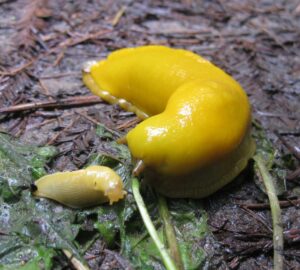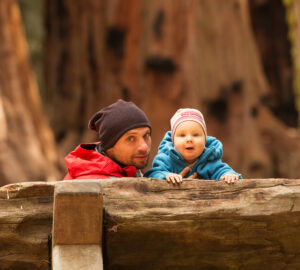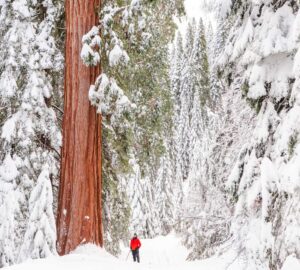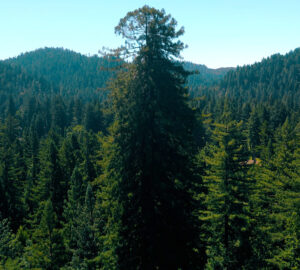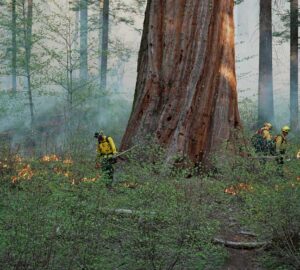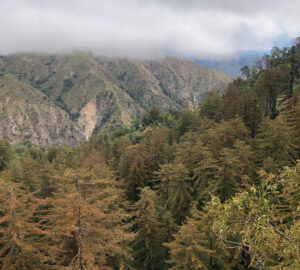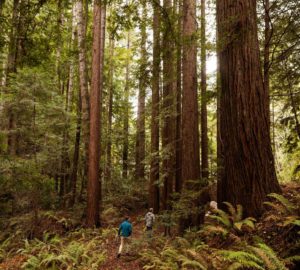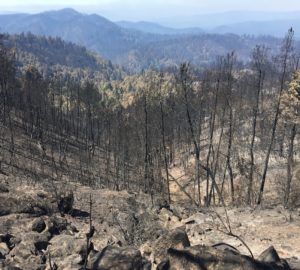Since I was a little girl, I’ve enjoyed standing next to the large cross-section of redwood trunk on display at the entrance of Muir Woods National Monument. It boggles my mind that this redwood started growing in the year 909 A.D. Over its more than 1,000 year lifetime it inadvertently marked the passage of time as it built wood in concentric tree rings along its trunk. Now we get to see our own history displayed alongside its tree rings, from the landing of Christopher Columbus in the Americas in 1492 to the signing of the Declaration of Independence in 1776.
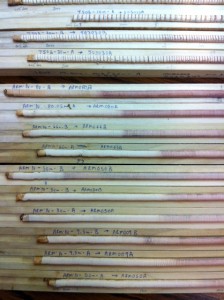
Every annual tree ring is different and tells a story about the year it was made. Allyson Carroll, a dendrochronologist at Humboldt State University and researcher in the League’s Redwoods and Climate Change Initiative, is an expert at dating tree rings and inferring how redwoods grew in years past. A thick tree ring tells us that the redwood grew vigorously that year and had plenty of water and sunlight during the spring and summer. A thin tree ring indicates that conditions were tough for redwood growth that year. She examines these patterns in redwood and has created an incredibly detailed historical record of conditions in California over the past centuries. We are relying on this unique historical record in our Redwoods and Climate Change Initiative to study how redwoods have tolerated the recent decades of climate change and are thrilled to learn that this record has other historical significance.
The San Francisco Chronicle reports how this redwood tree ring record is helping to determine if the Presidio Officer’s Club is one of the oldest buildings in California. The original redwood lumber used to construct the Club’s frame was exposed during renovation, and now those tree rings can be compared to our historical redwood record so we can learn when the trees were cut down to build this structure.
I’ll be following this study as it unfolds and will tell you when we discover just how old this remarkable building actually is. In the mean time, stop by Muir Woods and trace your own life story back in time with the help of some redwood tree rings!
Learn more about our Redwoods and Climate Change Initiative!

